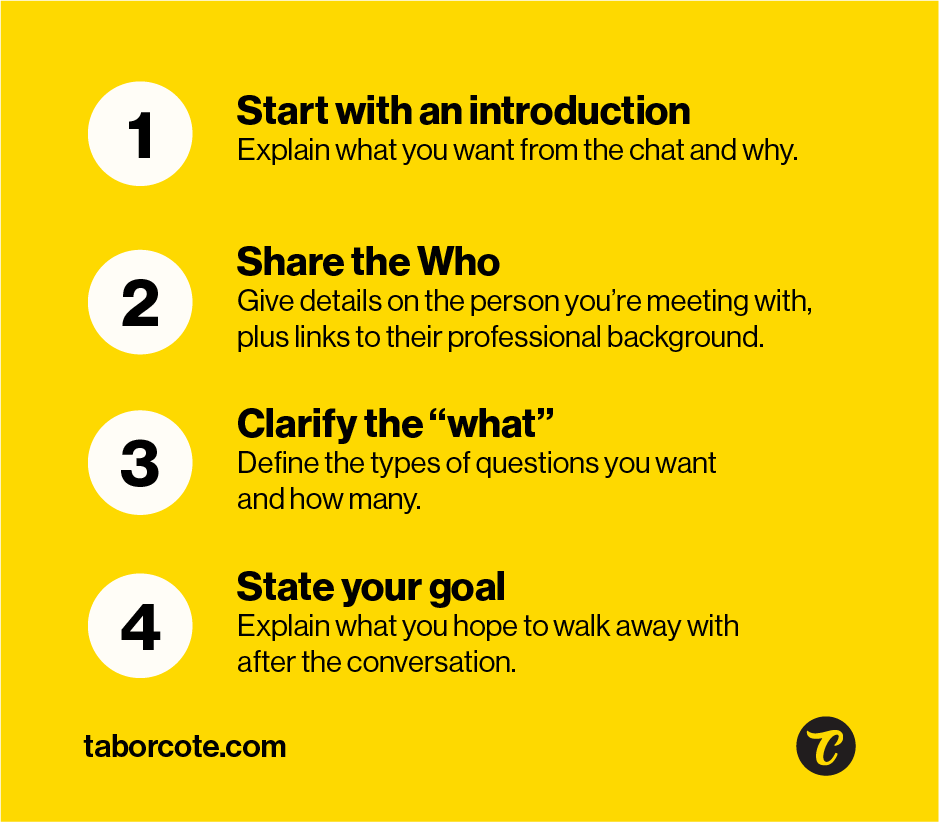How to use AI to interview people?
Have you ever been preparing for an important interview, coffee chat, or mentor meeting and wondered what kinds of questions you should ask?
A month ago, after discovering the site Talk to a Creative Director and scheduling Zoom calls with over 20 creative professionals, I had the same question. But I also had a secret weapon—ChatGPT. Today, I’ll walk you through my process for generating thoughtful, research-backed questions to ask creatives using ChatGPT. These go deeper than the usual surface-level “How does my portfolio look?”
Now, I know what you might be thinking: AI? How can AI help me come up with creative interview questions? The truth is, it’s surprisingly effective—if you give it the right prompts and resources. This post will show you exactly how to do that.
The process
Step 1: Gather Background Information
I started by finding the creative director’s LinkedIn profile and their portfolio website's “About Me” section. With these links ready, I went to ChatGPT.
Here’s the introductory prompt I used:
I am meeting with a graphic design creative director later today to talk about feedback on my portfolio and his professional design experience—tips and tricks for the industry. I need help coming up with some questions to ask during the call.
Step 2: Identify “The Who”
Tell ChatGPT who you’re meeting with and provide sources it can pull from:
His name is Paul Skeffington, and he’s based in New York City. His LinkedIn page with his work history can be found here: https://www.linkedin.com/in/paul-skeffington-90a84b5/
Here is his website About Me page: https://www.skeffsbook.com/about
Step 3: Define “The What”
Be specific about the type and number of questions you want:
I would like a list of five questions. One should focus on improving my portfolio to stand out in this industry, one should be about standing out in the industry based on his experience, and the remaining three should be based on all the information I’ve provided.
Step 4: State “The Goal”
Let ChatGPT know what you want to achieve from the conversation:
My goal for the call is to gain a deeper understanding of the current graphic design industry and how I can improve my chances of being hired.
Putting It All Together
Here’s the full recap:
Start with an introduction – Explain what you want from the chat and why.
Share the “who” – Give details on the person you’re meeting with, plus links to their professional background.
Clarify the “what” – Define the types of questions you want and how many.
State your goal – Explain what you hope to walk away with after the conversation.
Graphic Showing the steps on how to ask ChatGPT a Question
Example
Prompt:
His name is Paul Skeffington, and he is based in New York City. His LinkedIn page with his work history can be found here: https://www.linkedin.com/in/paul-skeffington-90a84b5/. Here is his website About Me page: https://www.skeffsbook.com/about. I would like a list of five questions. One should be about improving my portfolio to stand out in this industry, one should be about standing out in the industry based on his experience, and the other three should be based on the information I’ve provided. My goal for the call is to gain a deeper understanding of the current graphic design industry and how I can improve my chances of being hired.
Results:
Portfolio Improvement (Agency-Focused)
“From your experience working with top agencies and creative studios, what makes a junior designer’s portfolio stand out when applying to places like those? Are there specific types of projects or presentation styles that catch your attention?”
Standing Out in the Industry
“You’ve worked across both agency and in-house roles—reimagining in-house teams at Subway and Purell. From your perspective, what qualities or approaches make a designer truly stand out in today’s graphic design landscape?”
Building Credibility from School Work
“When transitioning from student projects to freelance work, how can I present my school portfolio in a way that builds credibility with paying clients—especially when I don’t yet have many real-world case studies?”
Conclusion
No matter what ChatGPT generates, always double-check its suggestions for accuracy. AI can occasionally “hallucinate” details, so think of this process as a starting point for creating well-researched, customized questions.
This is just one example of how I integrate ChatGPT into my creative workflow. It’s not only great for brainstorming questions—it can also help you streamline countless other tasks.
If you’d like to learn more about using ChatGPT in your business, sign up for our monthly newsletter and be the first in line to receive a free PDF on exactly how to implement it into your own business workflow (coming Friday, August 15th).

